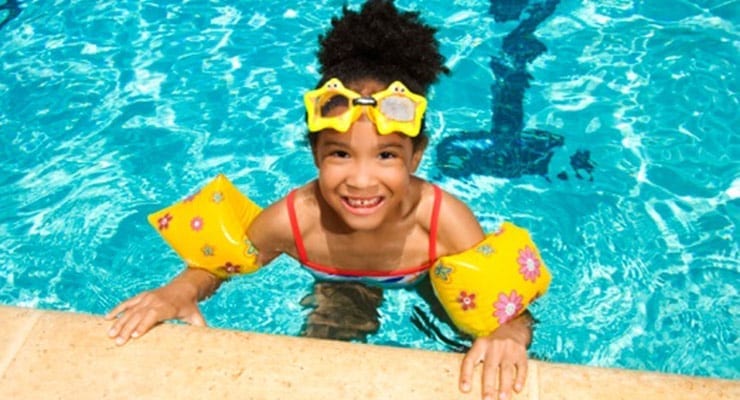If you are planning on hitting the beach, pool, or nearby lake to celebrate the 4th this year, make sure you keep your little ones safe while enjoying the water with family and friends!
The Infant Swimming Resource provided the following tips to help families protect their young children in and around the water this 4th of July weekend.
“Research shows that most drownings occur when a child is in the direct care of an adult care giver,” said Dr. Harvey Barnett, founder of Infant Swimming Resource. “This holiday weekend with picnics, pool parties, day trips to the beach or on the boat, it is important that parents are exercising their most important defense against drowning – Constant Eyes On (CEO) Supervision.”
Lake and Beach Safety Tips
1. CEO Supervision – Never turn your back on your child around water. It takes just seconds for him/her to be in serious trouble. At the beach, it’s important that the supervising adult is no farther away than 10 feet from a young child. Segment the supervision responsibilities so there are never questions about which adult is responsible for watching the child. Be aware of the distractions unique to the beach/shore setting: heat, noise, people-watching, sun glare, and the monotony of a young child’s repetitive play. Even professional beach lifeguards guard the beach in timed segments. So you should too.
2. Bright Colors – Dress your child in bright colors when going to the lake or the beach. Use a consistent bright color and style of swim suit so all family members have a consistent image of what the child is wearing.
3. Pictures – Have a picture of your child in the consistent “beach suit or lake outfit” with you to show the life guard or others who may be with you. That way they know to keep an eye on him or her. Put it in a plastic bag.
4. Cell Phones – Your cell phone is VERY important. You may want to protect it from the salt spray by putting it in plastic bag.
5. Self-rescue Skills – Teach young children self-rescue skills as the final layer of defense if they go unnoticed into a body of water. Survival swimming and a demonstration of the roll back to float skills prior to all water recreation is important. Let your certified Infant Swimming Resource instructor know you are going to the beach or lake so skills that are of greater benefit in rapidly moving, turbulent water with poor visibility, can be stabilized, or practiced more during lessons.
6. Dock Safety – Have a hook, rope, and throw ring attached to the dock. Such that these can be used at a moment’s notice. Teach and practice their use, but do not allow unsupervised practice or play with these vital survival tools.
7. Rope off a wading/swimming area – Begin at the shore and extend a rope out to a depth of your choice. Allow your children to swim off of the shore ONLY in this area. It reduces where you might have to search, where they might be upon evading your home supervision.
8. Go no further line – Paint a “go no further” line 2.5 feet in from all edges of the dock. Teach children to hold an adult’s hand between that line and the any edge of the dock. This is better than the verbal and vague “do not get too close to the edge” saying. Install a dock gate at the entrance of the dock that is armed with an alarm.
9. Life Jackets – Life jackets must be worn in a boat or around the water when there is the potential for an accidental submersion. But, life jackets are not a substitute for the ability to swim nor for adult supervision. When picking out a life jacket, please read the warning labels as some of them will not float a child face-up.
10. Floaties – Flotation devices such as floaties, inflatable rings, etc., can often times provide a false sense of security for parents and children. These items can easily deflate or fall off your child’s arm leaving them in a potentially dangerous situation.
Infant Swimming Resource (ISR) is nationally recognized as the safest provider of swimming lessons for children six months to six years. With a passionate focus on baby swimming safety, and as the nation’s only behaviorally-based swim instruction program, ISR designed its program for parents who are dedicated to their child’s safety, education and developmental needs. Our emphasis on ensuring that not one more child drowns is founded on Dr. Harvey Barnett’s self-rescue training, proven to help young children survive in a drowning scenario. For more information on ISR, water and swim safety or to find an instructor in your area, please visit www.infantswim.com.





